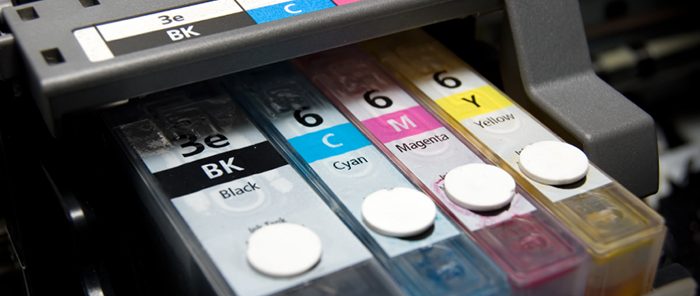
How to Lower Printing Costs Without Sacrificing Quality
When prices are fixed, lowering overhead is the only real option for increasing margins and ROI. And in B2B marketing, lower printing costs are one of the best ways to achieve higher returns on your marketing spend.
New technology makes it possible to lower printing costs significantly—without sacrificing quality or the communication impact you’re trying to achieve. What are some best practices to keep your printing costs low? Try these:
Design for Digital
Printing used to be a very expensive and often inefficient affair. The differences in cost between printing, say, 500 copies and 2,500 copies of a brochure might have been as low as a couple hundred dollars. To get a reasonable cost per piece, marketers were incented to print the larger run, and boxes of unused collateral gathered dust in storage rooms year after year.
But digital printing has changed all of that. If you can print something on a digital press—and more often than not you can—there’s no reason to print more than you need. What’s important, however, is to understand when it makes sense to print digitally and when it doesn’t.
As a rule of thumb, if it works online, it works with a digital press. Producing collateral that can be used equally well over the web or in print—without making any design changes—can significantly lower printing costs.
Manage Print Proactively
With digital technology, it’s now possible to print just what you need and only what you need. If you’re attending a trade show, for example, you might want to have 100-200 copies of every data sheet to hand out—but no more. By managing print production proactively, you can estimate how much you’re going to need beforehand, print the right amount and use what’s left over before printing another run.
Lower printing costs = Higher Returns
Lower printing costs and cheaper printing costs are two different things entirely. If your marketing collateral looks cheap, it can do more damage to your brand image than if you had no collateral at all. In fact, because offset printing is the exception to the rule now, if you use it sparingly yet effectively, the results can make greater impact than ever before.
Mark Pollak, a sales executive with Dallas-based Metropolitan Press, said marketers should use their print rep as a consultant before the design and production phase begins. “When bids are made in arrears, a printer is forced to work within a marketer’s guidelines,” he said. “But by working with a printer before anything is set in stone, we can come up with options that achieve the same impact at a much lower cost.”


